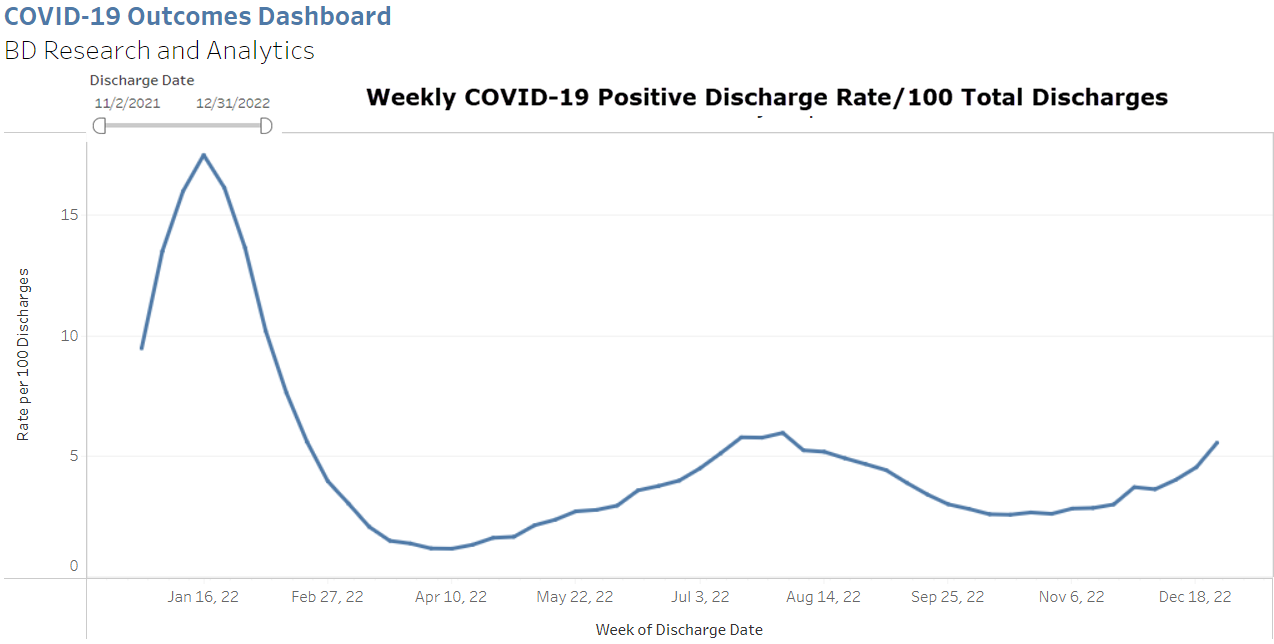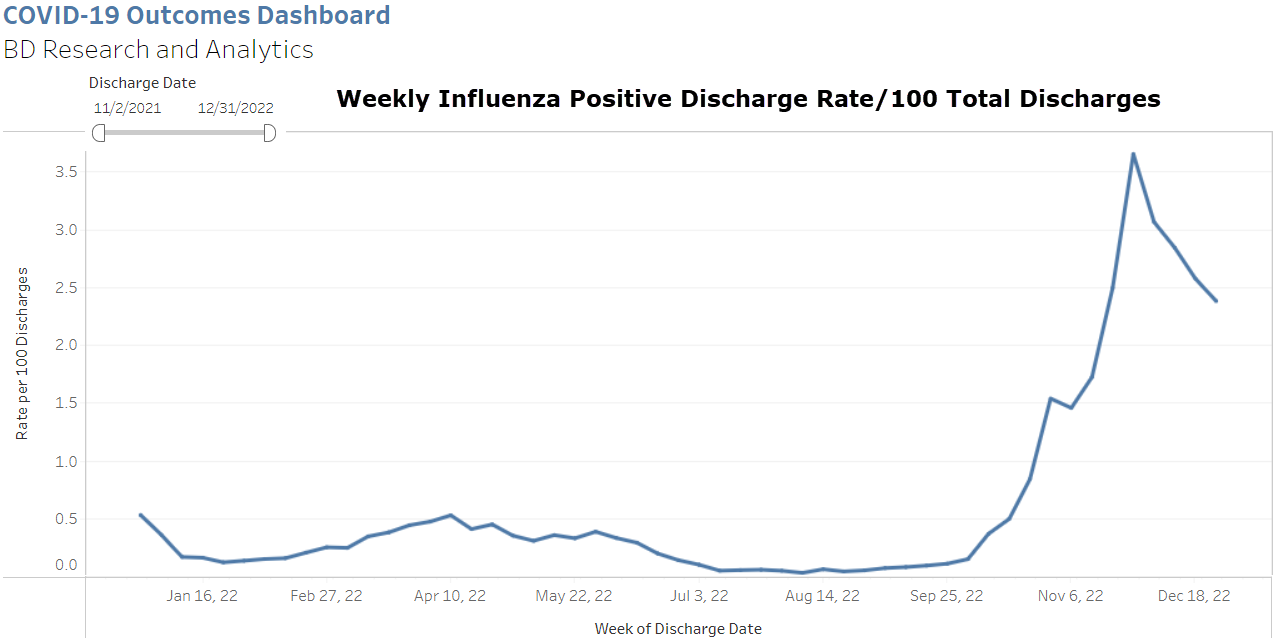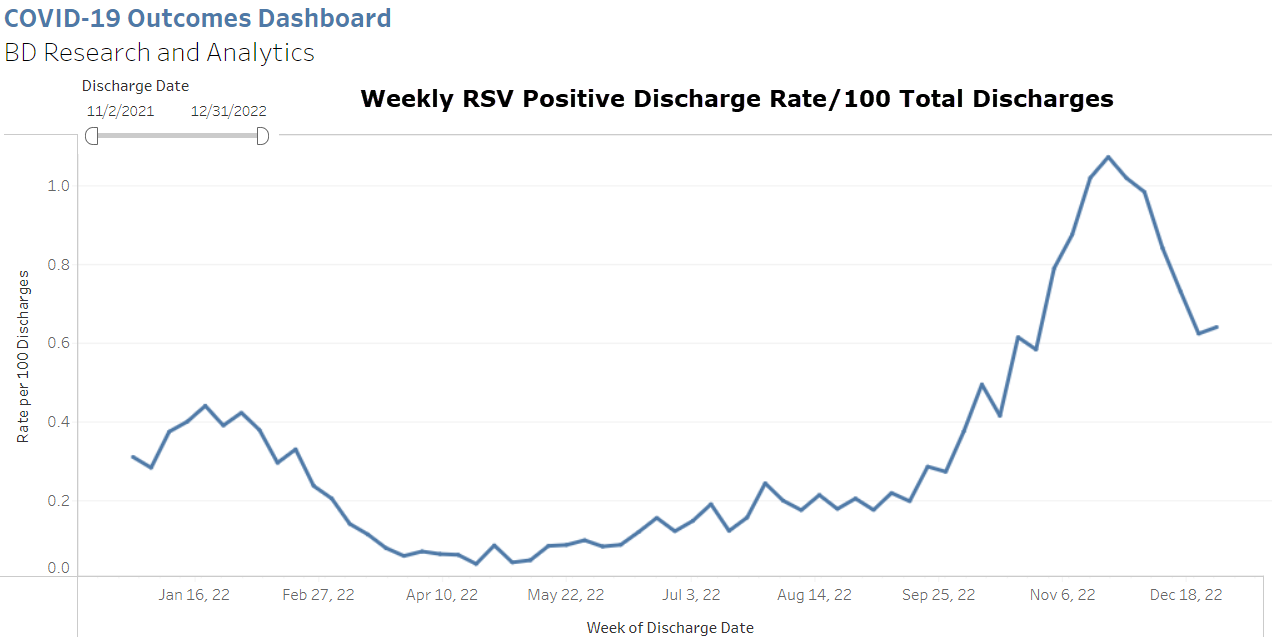
By Kalvin Yu, MD, FIDSA, Vice President of U.S. Medical Affairs and Vikas Gupta, Pharm.D., Director of Medical Affairs
In our seventh weekly snapshot of viral infections across the U.S, we present data through late December. In our last blog, we reported that hospital discharges for flu have decreased, while hospital discharges for COVID-19 continue to increase. That trend accelerated in mid to late December – as COVID-19 hospitalizations surged. Meanwhile, hospital discharges for RSV have stabilized and remain below the 1.0/100 hospital discharges threshold.
Here is what our discharge data show through December 31:
COVID-19
Hospital discharges for COVID-19 have increased to 5.6/100 discharges. This discharge rate is approaching the peak that the U.S. experienced during the Omicron B.5 wave in summer 2022 (6.0/100 discharges in our data for the week ending July 31, 2022), but still well below the original Omicron wave from last January (17.5/100 discharges in our data for the week ending January 16, 2022). The increase in hospital discharges for COVID-19 could be driven by XBB 1.5, as the Centers for Disease Control and Prevention (CDC) has reported that the new and emerging variant now accounts for approximately 40 percent of cases nationwide. It will be important to monitor the impact of XBB 1.5 and its severity following the New Year holiday.

FLU
Hospital discharges for flu decreased again to 2.4/100 discharges (compared to 2.9/100 discharges in our last blog). Flu activity continues to drop nationwide after the early surge witnessed in November. As pre-pandemic respiratory viruses have traditionally increased after the holidays and New Year’s Eve celebrations in aggregate, we will be following the post-holidays trends this first season of all three viruses (COVID-19, flu and RSV) circulating throughout winter s to better inform future seasons.

RSV
The RSV hospital discharge rate has remained relatively steady and is 0.6/100 hospital discharges (compared to 0.7/100 in our last blog post). This is the second consecutive time in our blog series that we have reported hospital discharges for RSV below the 1.0/100 threshold – a likely indicator that hospital discharges for RSV will continue to stabilize as we head deeper into winter.

About BD Infectious Disease Insights
Emerging infectious diseases have been increasing in frequency during the past few decades. None have assessed the U.S. health care system’s capacity or resiliency like COVID-19 – forever changing the way that we think about future outbreaks and how we manage the related unintended consequences. The BD Infectious Disease Insights series investigates today’s most prominent infectious disease trends. The series leverages the depth and breadth of our data to serve as an ongoing bellwether on the state of infectious diseases in the U.S., backed by clinical insights on how to increase overall awareness and preparedness
Subscribe to receive BD blog alerts